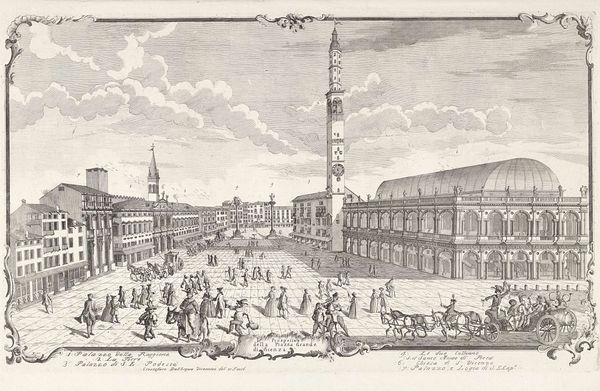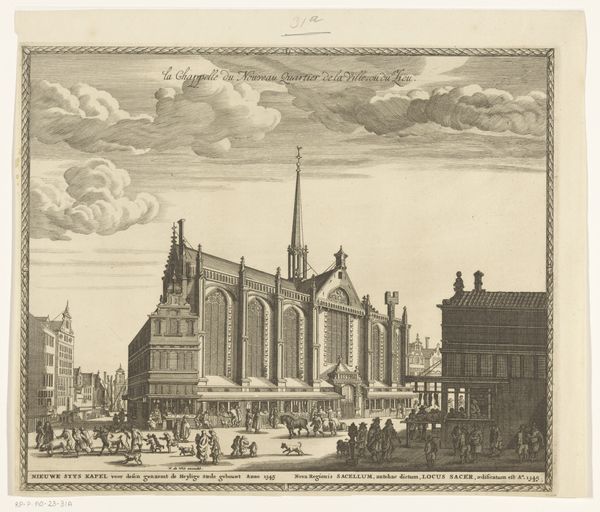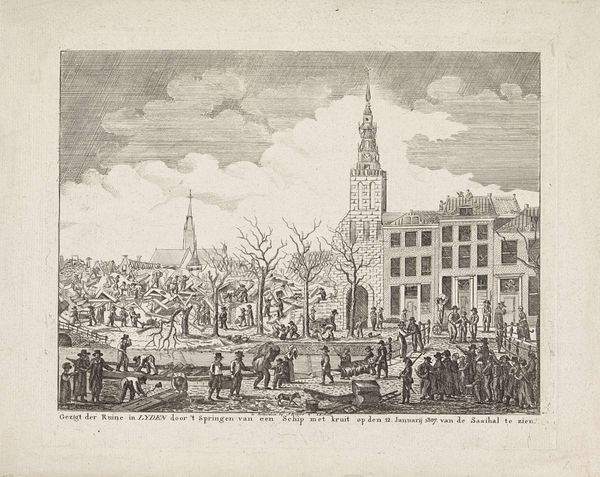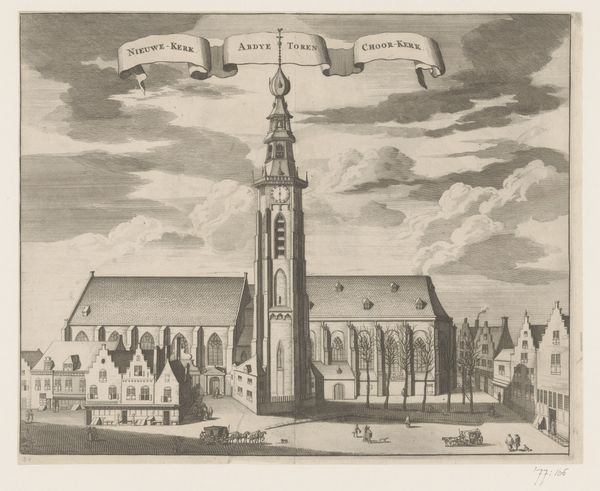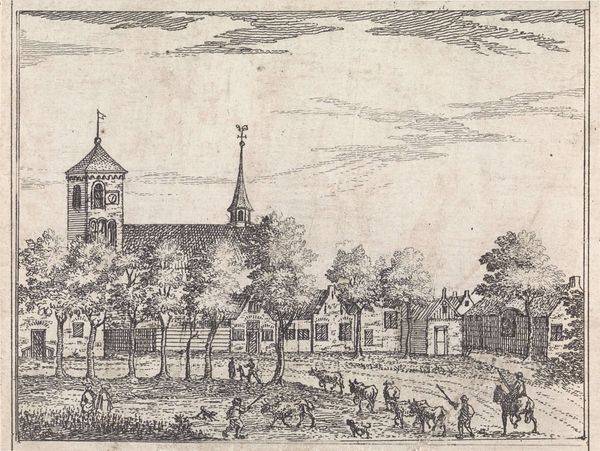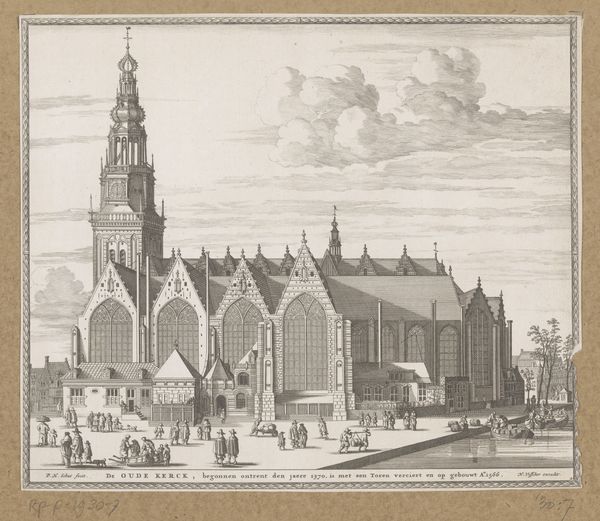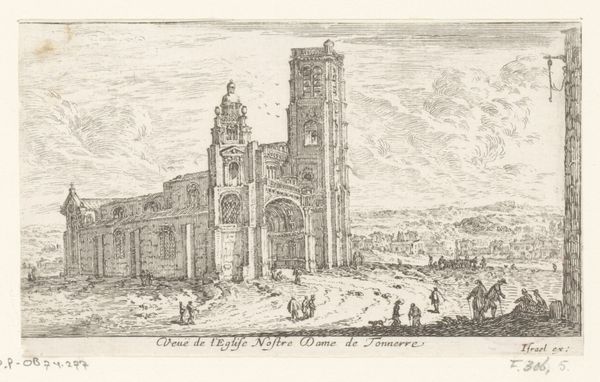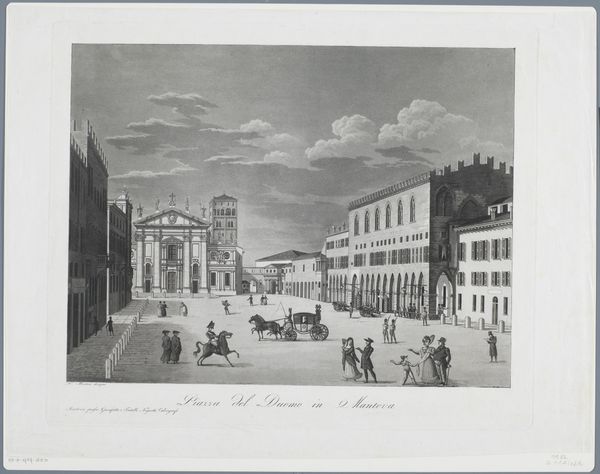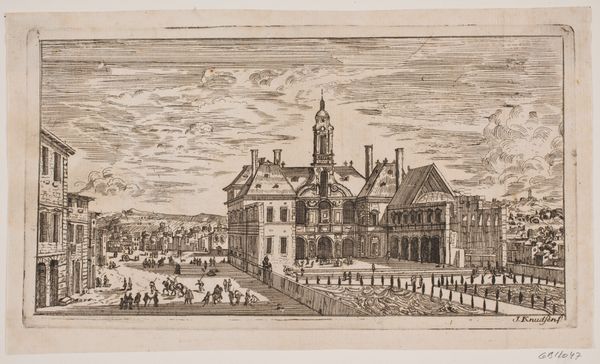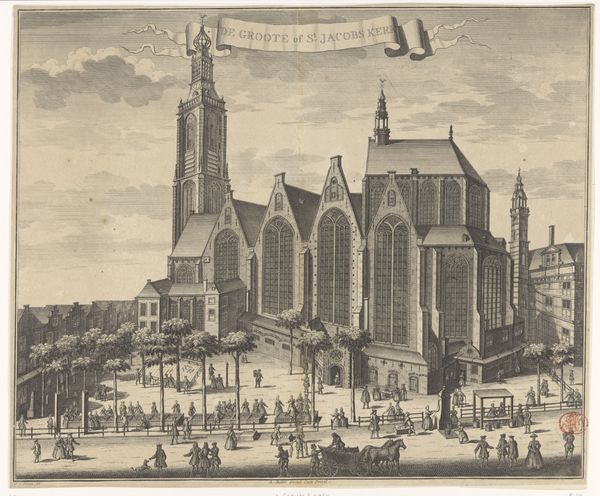
drawing, print, etching, engraving, architecture
architectural sketch
drawing
aged paper
baroque
mechanical pen drawing
etching
old engraving style
sketch book
sketchwork
pen-ink sketch
architectural drawing
pen work
architecture drawing
cityscape
engraving
architecture
Dimensions: height 120 mm, width 140 mm
Copyright: Rijks Museum: Open Domain
Editor: This etching from 1714 shows the Dom Tower illuminated, created by an anonymous artist. It's quite striking, almost eerie, with the dark sky and sharply defined figures. How do you interpret this work? Curator: I see this image as a powerful document of its time, not just a cityscape. Think about the social context of the early 18th century. Illumination was a display of power, often orchestrated by those in authority. This wasn't just about pretty lights. Editor: So, it was a statement? Curator: Exactly. Who benefits from this spectacle? Who is excluded? Consider the cost of this illumination in a society marked by deep inequalities. Was it accessible to all, or was it primarily intended to impress upon the populace the grandeur and might of the ruling class? How might those living in poverty have perceived this extravagance? Editor: That makes me rethink the image. It’s easy to just see a historical scene, but you're right, it speaks to power dynamics. Curator: And think about the role of the church and its tower. Towers often represent both spiritual aspiration and earthly control. Does the illumination reinforce the church's dominance, or perhaps signal something about the relationship between religious and secular power in Utrecht at that time? What happens if we view architecture not as a static object, but a tool for controlling public spaces? Editor: I hadn't considered the power element so directly. Thanks, that gives me a lot to consider about the Dom Tower, and its place in Dutch society. Curator: And hopefully prompts you to consider the unacknowledged forces at play in any artwork!
Comments
No comments
Be the first to comment and join the conversation on the ultimate creative platform.
